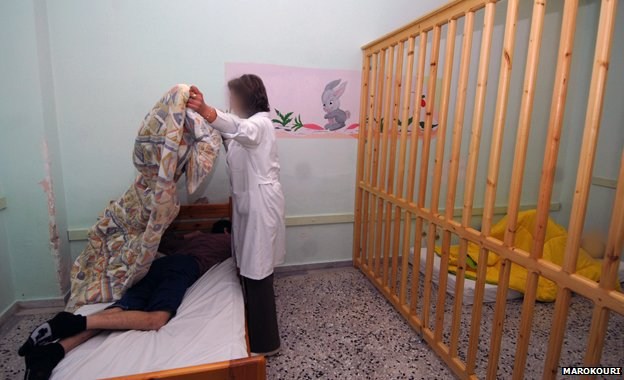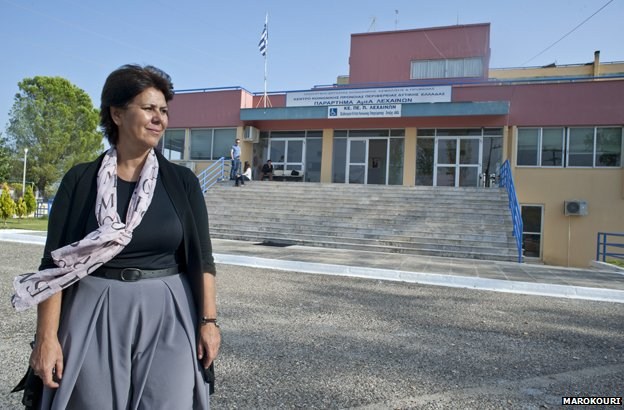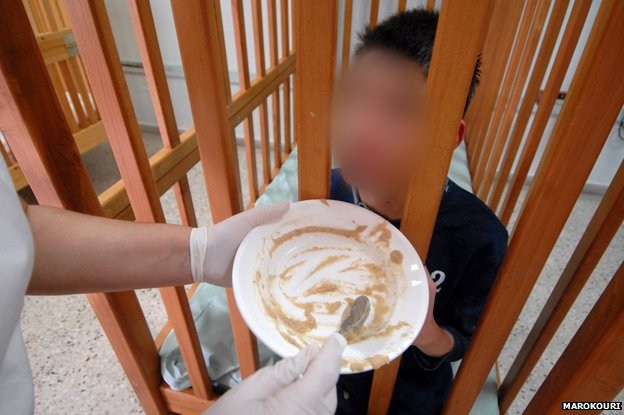collage and photos www.zougla.gr
Children with special needs have been locked up days on end in wooden cages in conditions reminiscent of other times.
Five years after its first report on the Centre in Lechaina, a small town in the south of Greece, the BBC has again published footage of its conditions, "which shows that nothing has changed".

"For their own good"
"Before the wooden cage-beds were installed, the children’s arms and legs had been constantly tied up to their cots. The cages were meant to provide security as we are understaffed," says a nurse who worked there, trying to justify the horrors.
According to the BBC, the centre has a single nurse and an assistant on each floor, and no permanent doctor. "If one of the children has to go to the hospital, he/she is accompanied by one of the nurses. A single person stays back to look after all of them," adds the nurse.

"The cages are a necessary evil"
The centre’s new director Gina Tsoukala maintains that "the cages shouldn't be present. But without them, we would be unable to function due to staff shortages."
"Some of the children hurt themselves. That is why we use these wooden partitions on the physician’s advice. Other children are free to communicate and interact with one another to some extent" she says.

The centre’s director Gina Tsoukala
Europeans discovered this hell
The publication reminds that the shameful photos were first posted 5 years ago when a group of students from European countries worked as volunteers at the centre. Shocked by the conditions in which people with special needs were living, the volunteers described them in a document, which they sent to EU policymakers and humanitarian organisations.

The revelations prompted an intervention of the Ombudsman. He produced a report which stated that "practices related to long-term movement restrictions are entirely illegal and contrary to the commitment for respect and upholding human rights." The Ombudsman urged the government to intervene.

The BBC publication
A nightmare whitewashed
Five years later, the situation appears unchanged. The only difference are some added colours designed to give a more appealing touch to the cages. In addition, a playroom has been put in place. However, there is no employee available to spend time with the children and they sit there on their own, looking at the walls.
